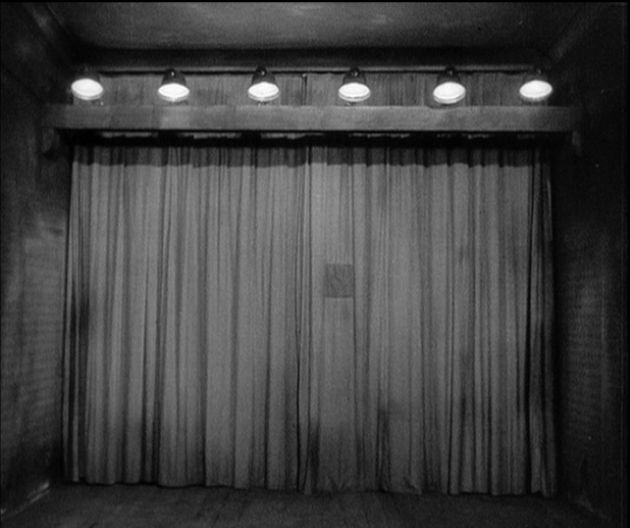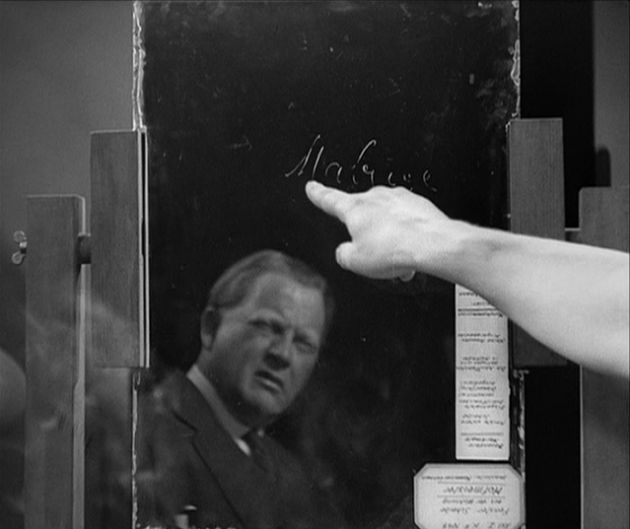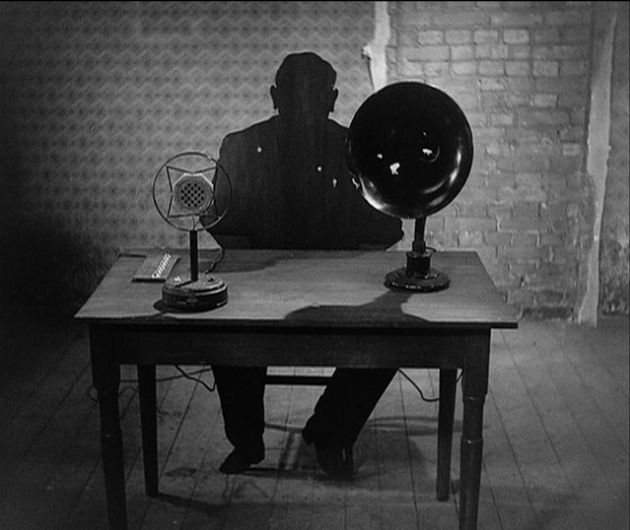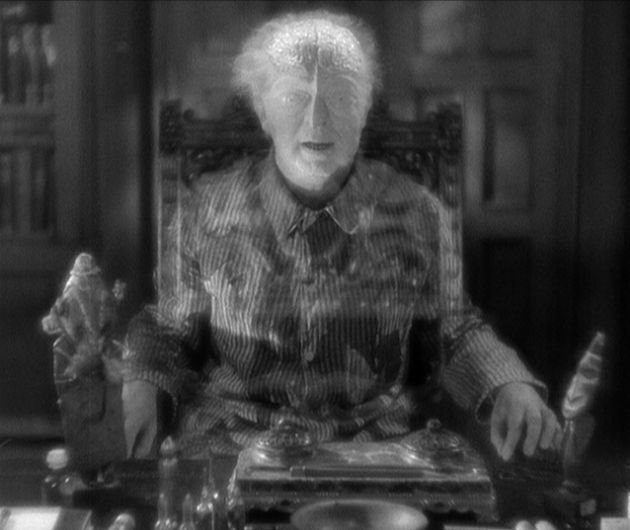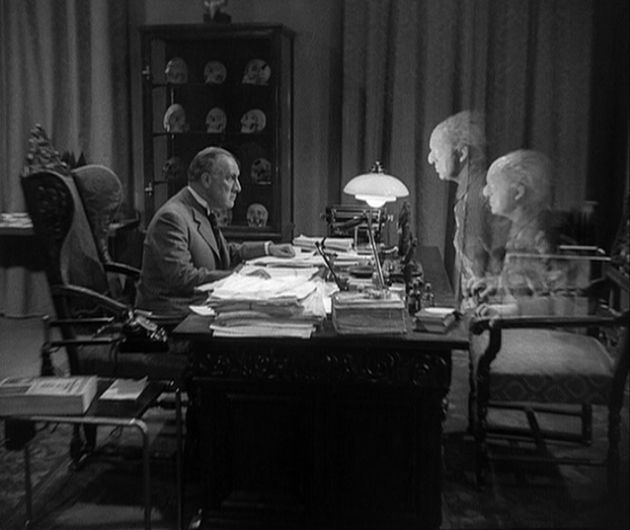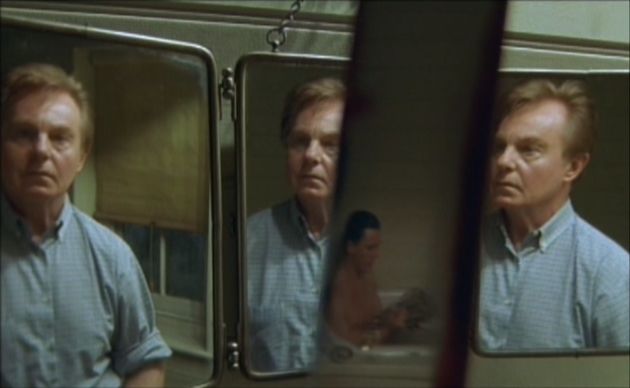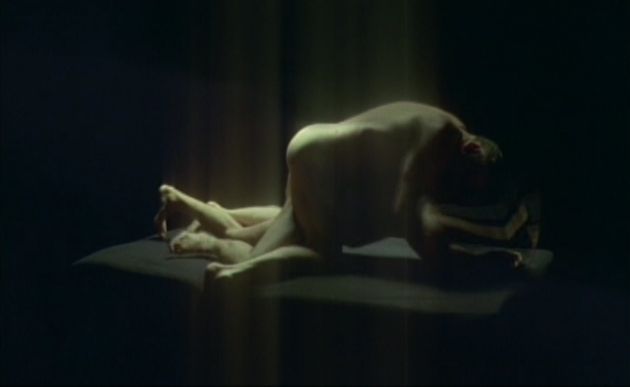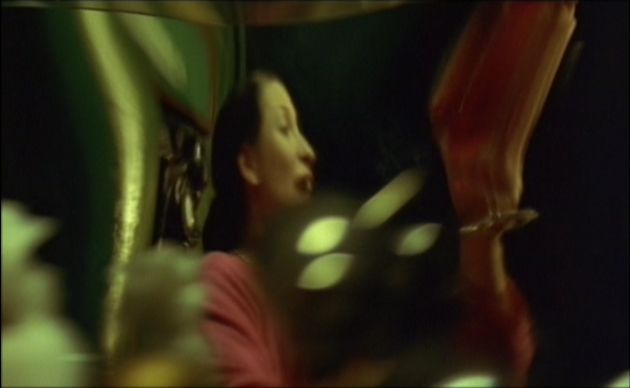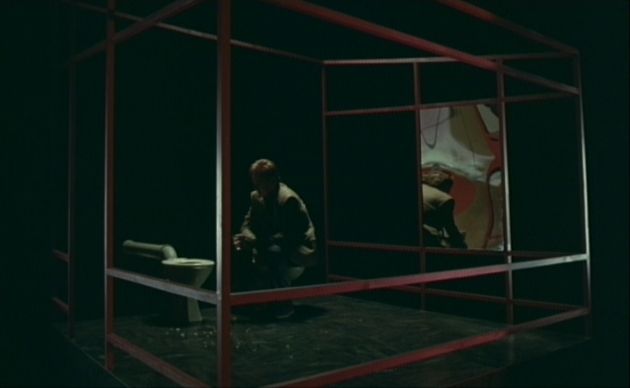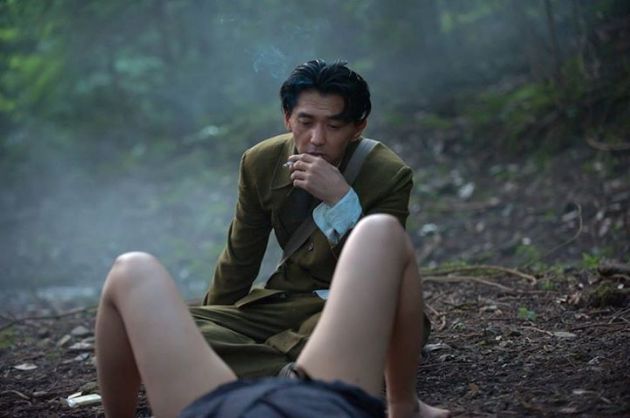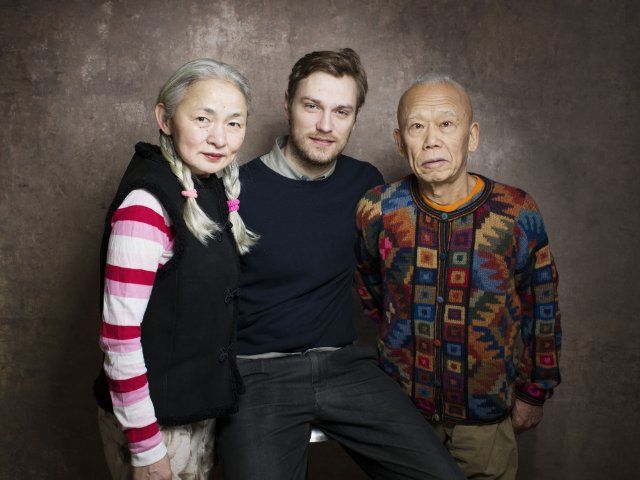
It's a sunny Friday afternoon in early August. I am waiting outside of
an old three-story building in DUMBO, in what used to be an old,
industrial neighborhood of Brooklyn, right across the East River from
Manhattan. The neighborhood has been rapidly gentrifying in the last two
decades with luxury high-rises and condos. I know the neighborhood
pretty well and have been coming down here for years for various
reasons.
I am supposed to meet Zachary Heinzerling, director of Cutie and the Boxer and
his subjects, the Shinoharas, in their studio. They appear from the
south side of the street with the iconic dark blue steel beam of the
Manhattan Bridge in the background. The Shinoharas, Ushio and Noriko, a
pint-sized elderly Japanese artist couple, look just as adorable as they
do in the film. And Heinzerling looks so young, I don't even realize
he's the director of the film until later.
While they are getting
ready for the interview, I get the grand tour of their studio. The
place is just as crammed and messy as in the film -- piles of large-size
paintings on canvas frames and in rolled up forms and large scale,
bright-colored sculptures take up most of the space. Paint cans, jugs
and brushes litter every inch of the floor. I know how it is to live
with an artist, since I myself am married to an artist with a very
strong personality. I'm glad they didn't clean any of it up for the
press or anything. We go on to the roof and are presented with the
Manhattan skyline. It hits me that the Shinoharas have actually been
living in that much romanticized, bohemian New York artists' life style
all these years. But through the interview, I get the feeling that their
lives aren't all that romantic and glamorous.
Cutie and the Boxer will open in New York (and Los Angeles) on Friday, August 16 at the Lincoln Plaza Cinema and Landmark Sunshine Cinema. A national rollout will follow.
TWITCH: How this project come about?
ZACHARY
HEINZERLING: In 2007, Patrick Burns, a good friend of mine from
college, met the Shinoharas and about a year later introduced me to
them. We filmed one day with them and we made a short film and showed it
to some people. They were interested in it and recognized the same
things we thought were interesting about them. And then we just started
coming here, once a week at night or on weekends, because we both had
other jobs and working on other projects all the time. That was sort of
the start of our friendship and our basis for the project.
For
the first few years of our correspondences are not actually seen in the
film, because it's just mostly getting to know them and their work. It
was last year or so of filming when the honesty was shining through and
there were situations where they both were thinking about each other in
different ways. The show (Love is Roarrr!) happens and Ushio had
to think about Noriko's work in a new way and consider her place in the
art world in a way he hadn't before and Noriko having this body of work
to stand on and use it as a fodder, power in her relationship with Ushio
which she hadn't necessarily before, for their 40 year marriage, being
always seen in his shadow.
I think the idea was to portray this
relationship but it started out little bit more centered on Ushio and
his work. We interviewed bunch of artists, contemporaries and curators
but it slowly shifted to these scenes where they kind of interview each
other and them dealing with everyday life that was much more
interesting. The relationship was also more universal and potentially
appealing to more people, not only for people who are interested in
art.
How much footage of them did you have in total?
I
think we had about three hundred hours of footage. But a lot of those
are interviews that are not used in the film. Then we had the tropes of
archival footage and home video to go through. They document themselves
extremely well and other people have documented Ushio's life. So there
was a lot more to find. My approach was to gather everything and carving
out the most interesting story. In a documentary, you can't really
know what it is until you've filmed everything.
True.
Editing is kind of writing a story. It's pretty much starting with wealth and whittling it down process.
How did you feel about being filmed, having your life so intimately documented?
NORIKO
SHINOHARA: While they were filming, we never imagined it would take
such a long time. Usually it's after few hours or after few days of
filming and the movie would be done in a month. But Zach continued to
come for many years, like every week. so after a while, we gave up
caring. Then only after we gave up, thinking there will be no end to it,
he said "it's finished!"
It wasn't smooth in the beginning. It's
hard to open yourself up to a stranger if you hadn't had that kind of
experience before. It was especially hard for me alone. I believe for
Zach it was the first time experience too. We were both beginners at
this. I think it was one of the reasons why it took so many years. I am
glad to see the result though. He did a very good job. He gently and
beautifully filmed. My complaint is that the film is too pretty.
USHIO
SHINOHARA: Now I feel like this film's about some stranger. That's how I
feel right now. I do realize that after the film is released, I
wouldn't be able to ride the subway without being bothered.
I'm pretty sure that's most likely.
In
the movie, your conversation about JAWS being the best film by Steven
Spielberg really fascinated me, meaning you do your best work early in
your career. Do you think that is the case with most artists and do you
feel that way about yourself too, that your earlier work defines you?
NS: Spielberg's Jaws
was a masterpiece. He made it when he was young. He didn't make a finer
movie since then in my opinion. But in my case, the work I did in my
youth wasn't the best. Mostly I chased other people's work -- work of
renaissance painters or De Kooning, true masterpieces. Cutie Series, was
my first own creation which I just finished as a book, not published
yet. I want to do one more book. And since Zach showed me the
possibilities of animation (in the film), I want to make Cutie story
entirely with animation.
That would be lovely.
NS:
I'm still working and there will be much more to come from me. Whether I
can do it better than Cutie, I don't know yet. But any artist has to go
through that.
US: I still consider Jaws the finest film
around. I think it's more of a poem than film cause young Spielberg's
energy and passion are in that film. Later he became more successful and
more commercial and that's where we saw his real technical talent. But
what's different about art from film is that as an artist you
continually have to challenge yourself and reinvent yourself. I think
there is a huge difference in what artist does and what Spielberg does. I
don't consider Spielberg as a pure artist. If an artist aligns himself
with commercial realm, that artist ceases to be an artist.
ZH: (to Ushio) You didn't really answer the question, though. He's asking if your first work was your best.
US: To me every day is my first day as an artist. I am challenging myself every day.
The
thing is there is a consistency in your work that never changed. There
is a constant vitality whether you are punching the walls with boxing
gloves dipped in paint or making crazy sculpture out of card boards,
that hasn't changed. I am wondering if your 'being perceived as an
action painter' works against you to find a representation for your
newer work nowadays.
US: One thing you can say about artists
is when you look at the masters' work, they are not really multifaceted.
They have one or two things to say. Considering that, the only thing
you can do as an artist is do one thing and destroy what you've just
done and start anew. You have to constantly betray yourself. That's the
only way to evolve.
Noriko-san. I've seen many
figurative works and comic book style works before by Japanese artists.
But your work is very different. It's not the typical manga style people
associate with Japanese culture. I am curious where you get your
inspirations from.
NS: I started as a fine artist. In art
school in Japan, we had to study copying Greek sculpture. It's the basis
for the art college entrance exam.
I know this. I did that myself in Korea for three years.
Oh, really? Also, we were taught calligraphy at a very young age. Maybe it was the same for you too.
Yes, it's true.
Calligraphy
is one of the subjects they teach in school in Japan. I was good at
that. So I had those skills at the basic level. But I never imagined
becoming a comic book artist or a graphic artist. It was always fine
art. I did a textile design for a year because our son was 4 and we
needed money. But only that time. I didn't want to continue it even
though the salary was getting higher.
My style is different from
manga. Comic book art for me is not a comic book art. It's art. I
published my novella in 1994 and it served me as the basis for my
drawings. I also do etching. As you know etching techniques are all
about fine lines and drawings. That's why my style is different than
manga artists.
The film is about the Shinoharas the
artists and Shinoharas the couple. but it's also about New York. I
don't want to go down the memory lane with you but the 70s-80s era New
York is fascinating times. I want to know from your perspective how the
city the art world has changed.
NS: New York back then was a
dangerous town. We were constantly in danger. We moved here (to DUMBO)
in 1986. It was a scary place. After 7 p.m. we couldn't go out. Now,
even the newspapers say DUMBO is the most idealistic place to live in
New York City. But our lifestyle has not been changed. It became harder
for us because the rent is going up.
Back in SoHo, everyone
around us was artists, dancers, actors, a real community. They would
give us free drinks after the second drink at the bar. Not anymore. That
might be the worst thing that's changed in New York.
US: When we
were living in SoHo, it wasn't called SoHo. It was called Jackson
Pollock Area. Eventually we got kicked out and we moved to DUMBO
seventeen years ago. Being in New York City has always been fun. The
things I notice is that there are more people in the city. As far as art
goes, there are more Asian artists. That shows now the center of the
world is China. Mao Zedong, zen art and all these subject are now being
talked about. so that's kind of a huge change.
(
To Heinzerling) Is it the same for you?
ZH:
No. I'm from Texas. My romantic idea of New York is when it was in the
70s. For me New York's art world is defined by that era with the certain
SoHo art scene and every museum has 'your stalwart of the New York art
scene,' it's interesting that Ushio and Noriko were part of that and
lived that lifestyle. What's interesting too is that they continue to
live that way when a lot of people moved on to other things and became
very successful. But they transplanted their life here where nothing
like this exist anymore and continue to live and work in this loft and
struggle --
NS: Many people are very envious of this loft. (laughs)
ZH:
It's really a diamond in the rough. I'm sure there are a lot of other
diamonds around which we don't know about. So my outsider's perspective
sort of enhanced this romanticism of their lifestyle. I think a lot of
people in my generation have this romantic idea of struggling artists
dying with brush in their hands...
Oh yeah, myself included.
So it became an infatuation.
I just wanted to ask Ushio san a personal question. (I whisper the following in the translator's ear.) Your real reason for giving up drinking, was it for Noriko? You can say yes or no.
NS: As I said to Alexander Moore in the film, the liquor refused to go through his throat.
US: When I tried to drink, I couldn't breath. That was the real reason. So the answer is no.
You could've just said yes. (They all laugh)
The result was great. We both are very happy about it.
How long have you been sober?
Almost seven years.
If you had a chance to box anyone in the world. Who would you box?
US: Well, I don't want to box any person really. If I do, I'd probably box Jaws.
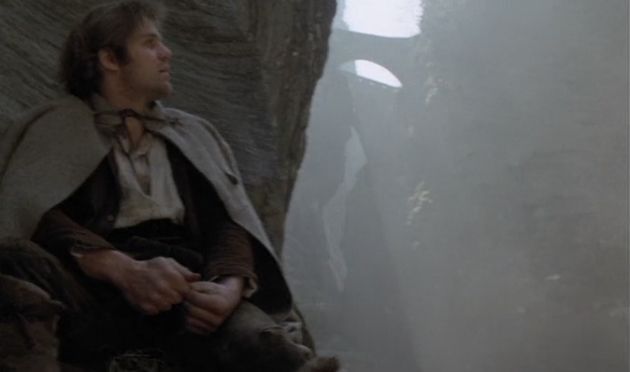
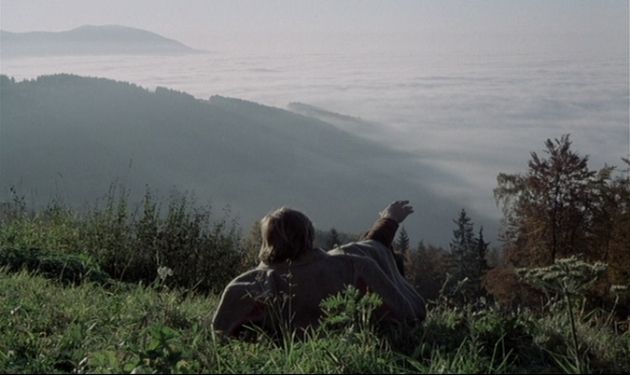

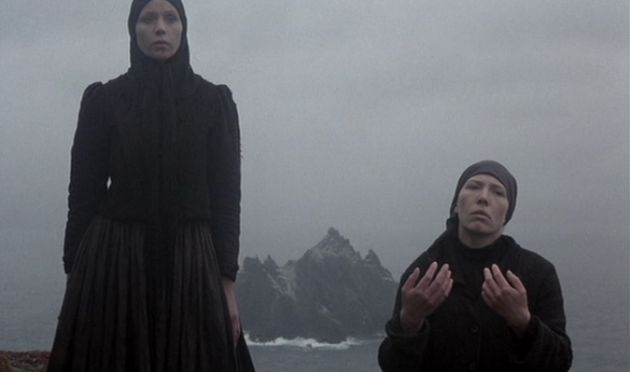
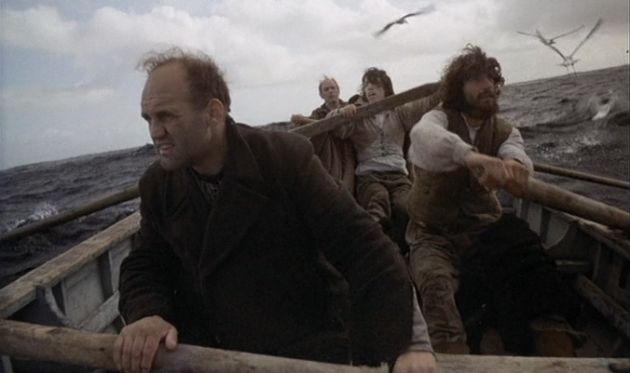
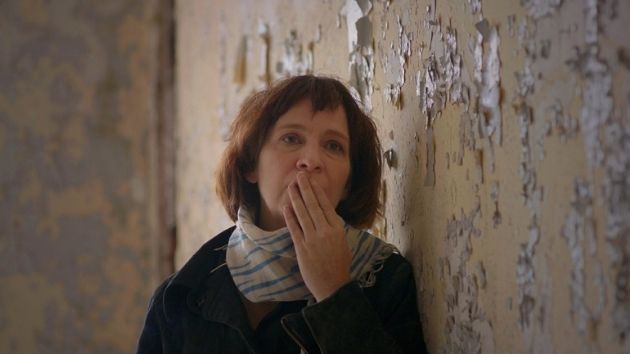
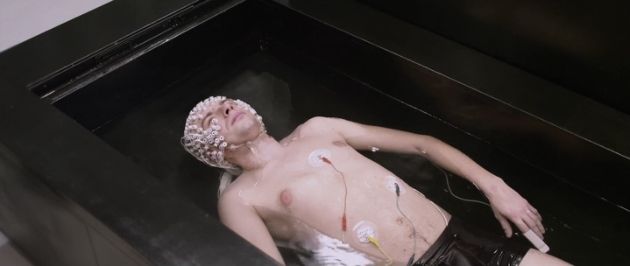


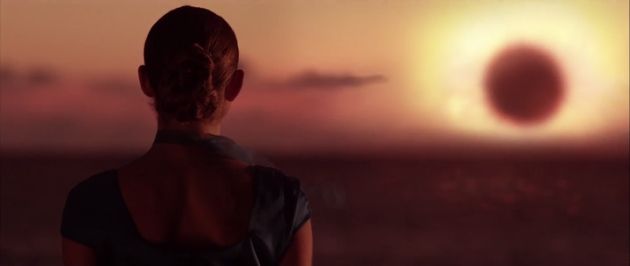
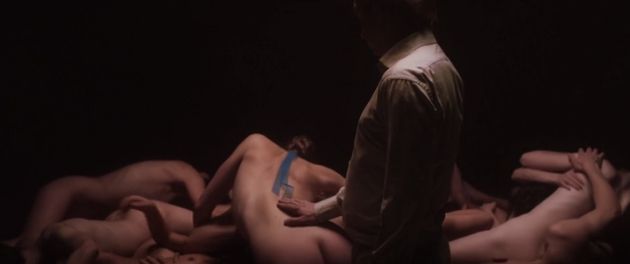
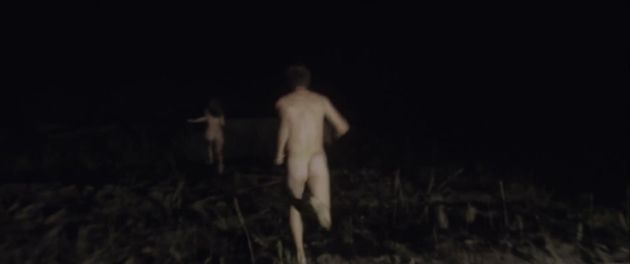
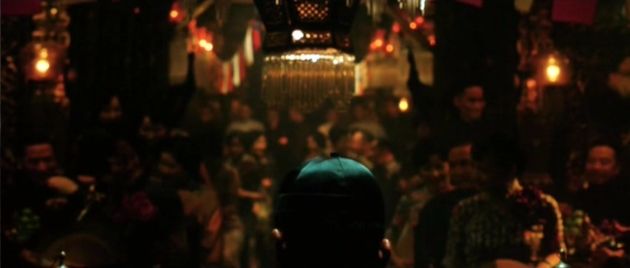
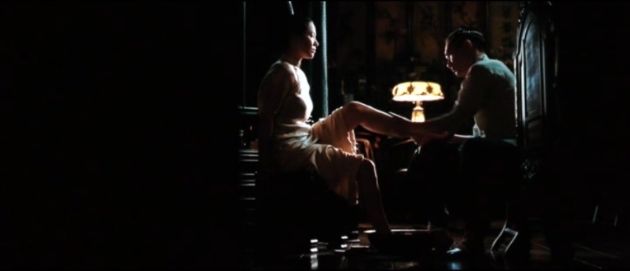

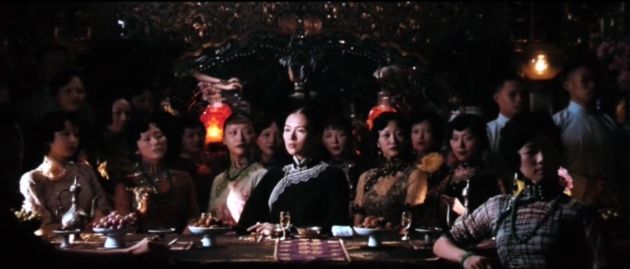



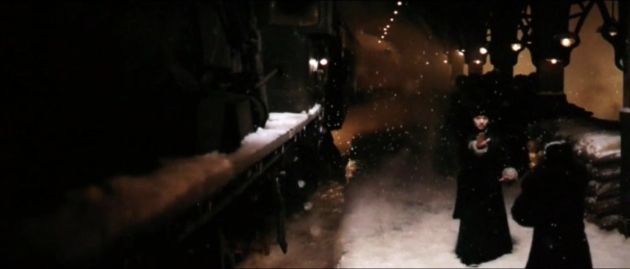
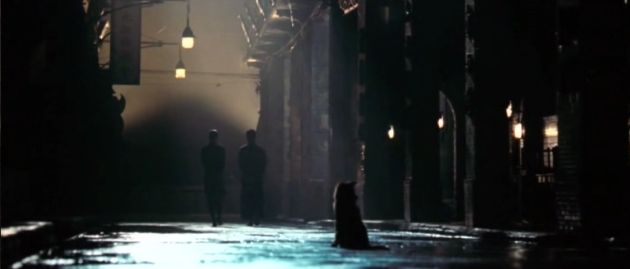
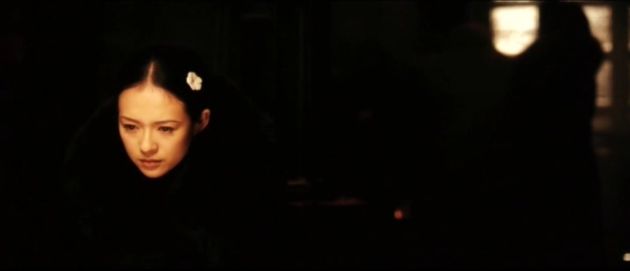

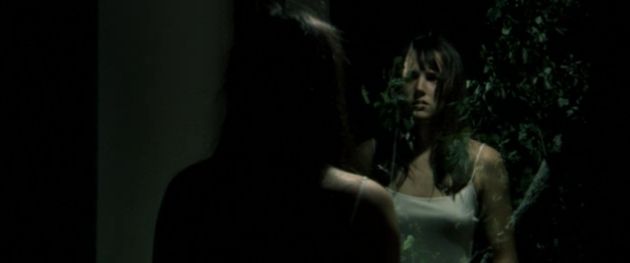

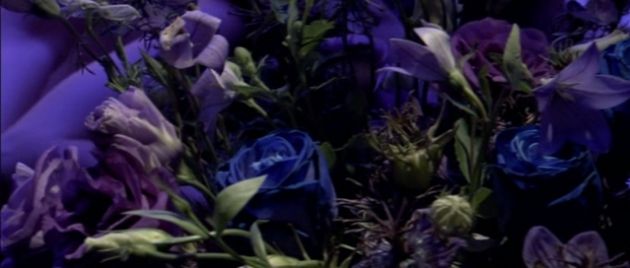
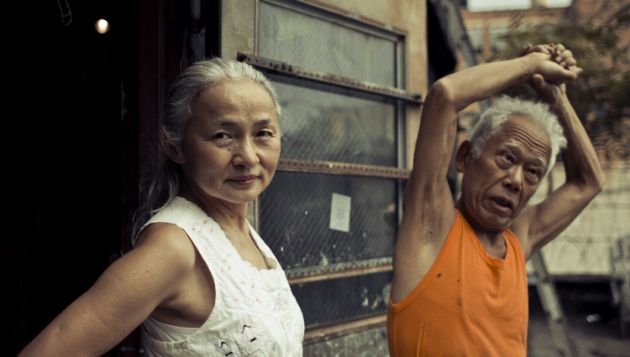
 Armed with home videos and photos, the doc shows Ushio Shinohara's rocky career as a visual artist. One of the founding members of Neo-Dadaism movement in the 60s and known for his action paintings (he punches the canvas wearing goggles and boxing gloves with paint sponges strapped on), Ushio came to New York in 1969 and never left. There he hung out with other pop influenced artists such as Andy Warhol in the Greenwich Village, in an era that many romanticize as the golden age of the New York art scene. Seen as important but not commercially viable, Ushio's work didn't really have financial successes. Even with his innate optimism and boundless energy sometimes weren't enough to overcome the hardships of being poor. He started drinking heavily. And it was Noriko, an art student and 23 years his junior who stuck with him and supported him all these years.
Armed with home videos and photos, the doc shows Ushio Shinohara's rocky career as a visual artist. One of the founding members of Neo-Dadaism movement in the 60s and known for his action paintings (he punches the canvas wearing goggles and boxing gloves with paint sponges strapped on), Ushio came to New York in 1969 and never left. There he hung out with other pop influenced artists such as Andy Warhol in the Greenwich Village, in an era that many romanticize as the golden age of the New York art scene. Seen as important but not commercially viable, Ushio's work didn't really have financial successes. Even with his innate optimism and boundless energy sometimes weren't enough to overcome the hardships of being poor. He started drinking heavily. And it was Noriko, an art student and 23 years his junior who stuck with him and supported him all these years. Then, there is Noriko the artist. Her cartoonish figurative drawings, paintings and accompanying narrative are very much derived from her own life, especially the relationship with Ushio. In the beautiful flash animation sequences, Noriko's alter ego, a pigtailed, forever naked 'Cutie' goes through life's hardships and happiness with 'Bullie' (bull is 'ushi' in Japanese), her boorish artist husband. Asserting herself late as an artist in the Shinohara household, she has her own 'queendom' -- a small space in the loft where she sketches and writes and where Ushio isn't welcome.
Then, there is Noriko the artist. Her cartoonish figurative drawings, paintings and accompanying narrative are very much derived from her own life, especially the relationship with Ushio. In the beautiful flash animation sequences, Noriko's alter ego, a pigtailed, forever naked 'Cutie' goes through life's hardships and happiness with 'Bullie' (bull is 'ushi' in Japanese), her boorish artist husband. Asserting herself late as an artist in the Shinohara household, she has her own 'queendom' -- a small space in the loft where she sketches and writes and where Ushio isn't welcome.
